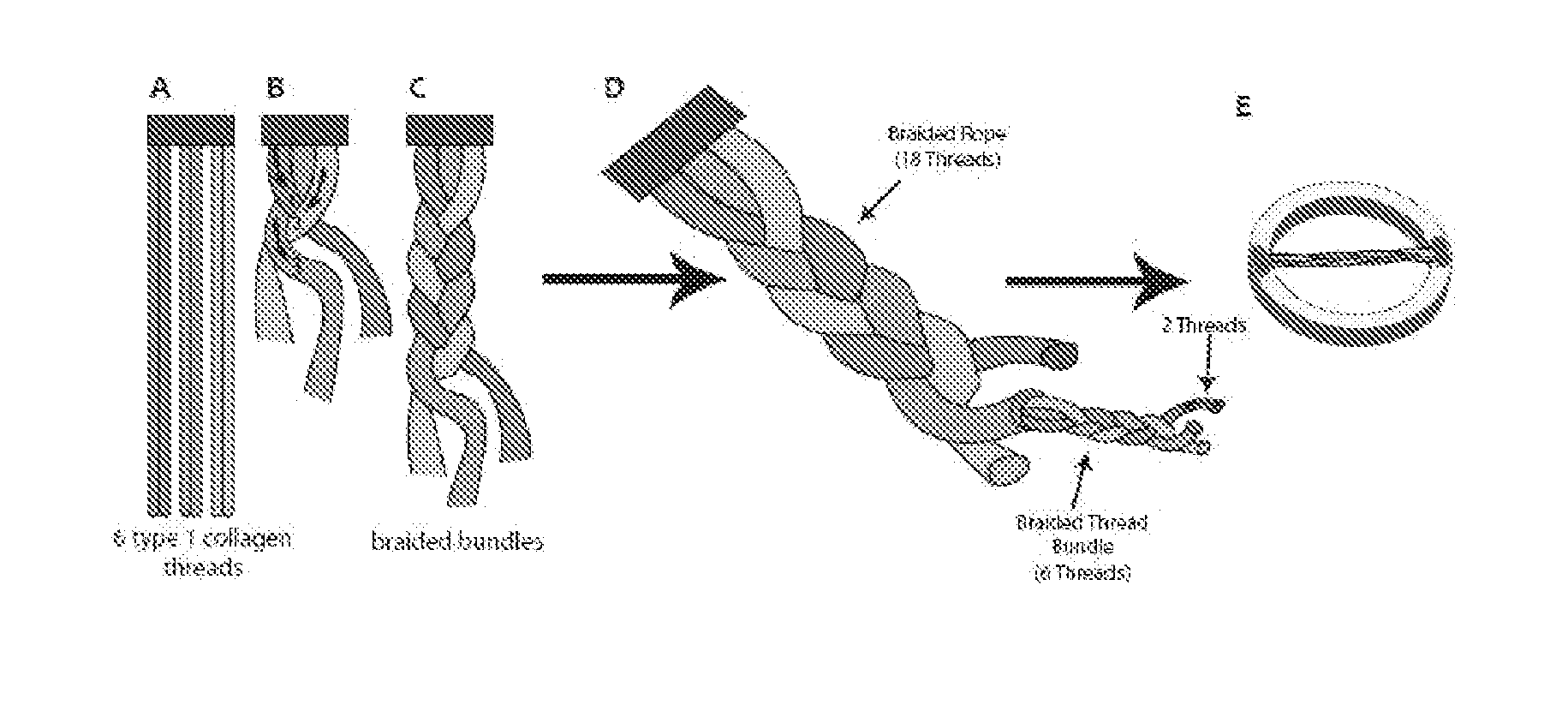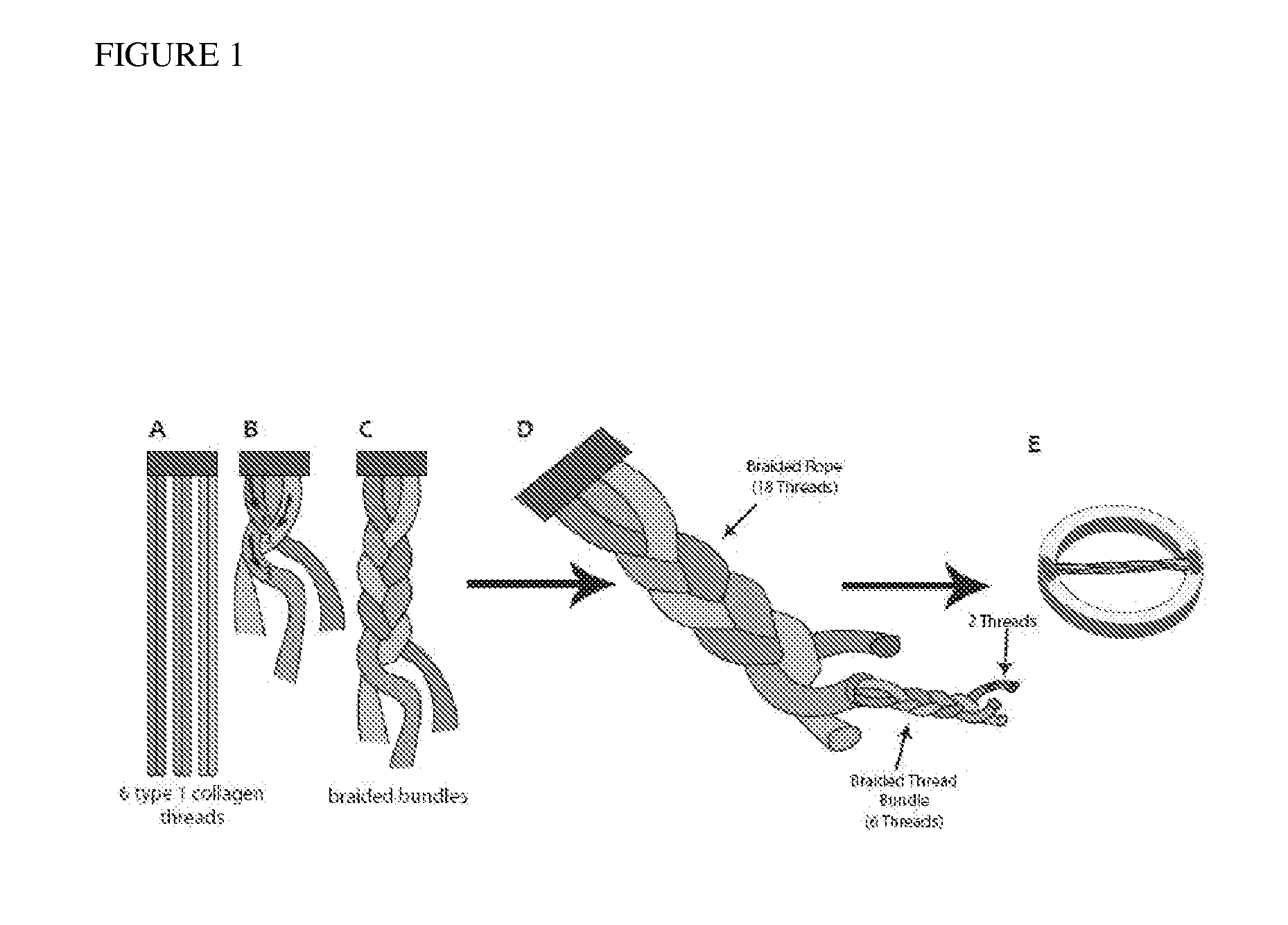Methods for regenerating skeletal muscle
- Summary
- Abstract
- Description
- Claims
- Application Information
AI Technical Summary
Benefits of technology
Problems solved by technology
Method used
Image
Examples
Embodiment Construction
[0056]Braided collagen microthreads were seeded with muscle-derived fibroblastic cells (MDFCs) as a scaffold to aid in muscle regeneration by providing a structure to create longitudinally aligned myotubes. Although braided collagen microthreads are not parallel to one another like each myofiber in native skeletal muscle, by weaving the microthreads together, the scaffold structure can be maintained without thread spreading from one another during hydration. When full thickness defect occurs, the entire depth of the muscle is damage, resulting in the destruction of many myofibers. Since the diameter of one microthread is smaller than that of a myofiber, which ranges from 20 to 100 μm, by braiding the threads together, the dimensions of the microthreads can be increased to fill a larger defect area. Studies have shown using a biomaterial with stiffness close to that of native muscle, 12 kPa, for engineering skeletal muscle can affect the length, alignment, and contractibility of the ...
PUM
| Property | Measurement | Unit |
|---|---|---|
| Diameter | aaaaa | aaaaa |
| Fraction | aaaaa | aaaaa |
| Time | aaaaa | aaaaa |
Abstract
Description
Claims
Application Information
 Login to View More
Login to View More - R&D
- Intellectual Property
- Life Sciences
- Materials
- Tech Scout
- Unparalleled Data Quality
- Higher Quality Content
- 60% Fewer Hallucinations
Browse by: Latest US Patents, China's latest patents, Technical Efficacy Thesaurus, Application Domain, Technology Topic, Popular Technical Reports.
© 2025 PatSnap. All rights reserved.Legal|Privacy policy|Modern Slavery Act Transparency Statement|Sitemap|About US| Contact US: help@patsnap.com



